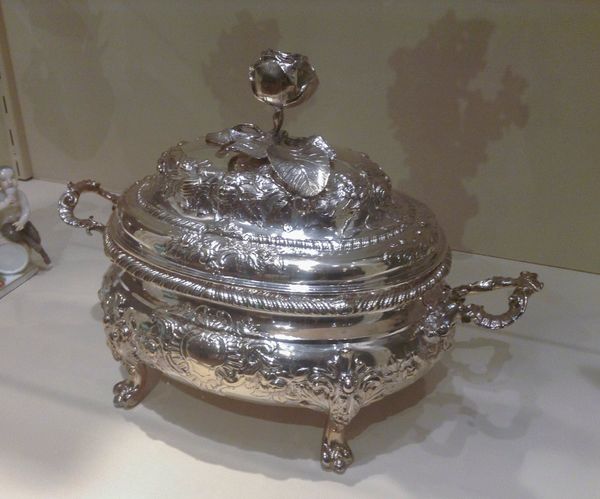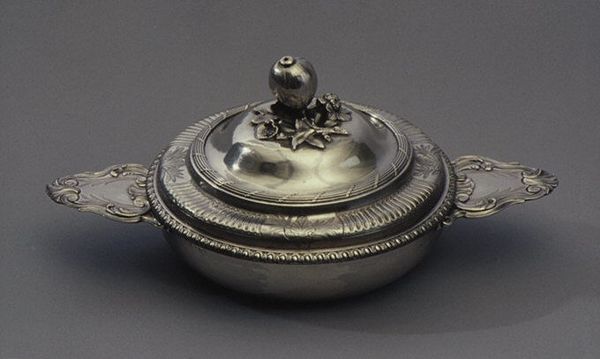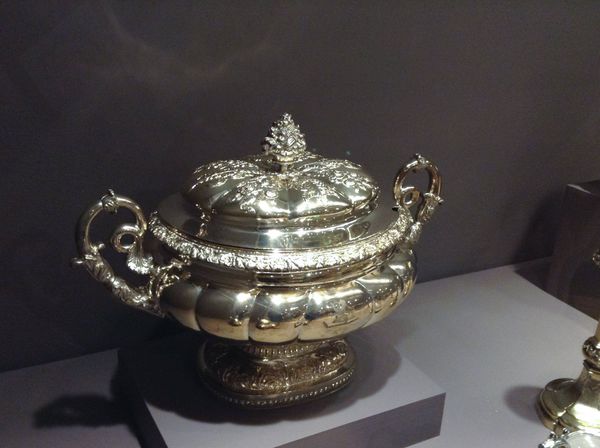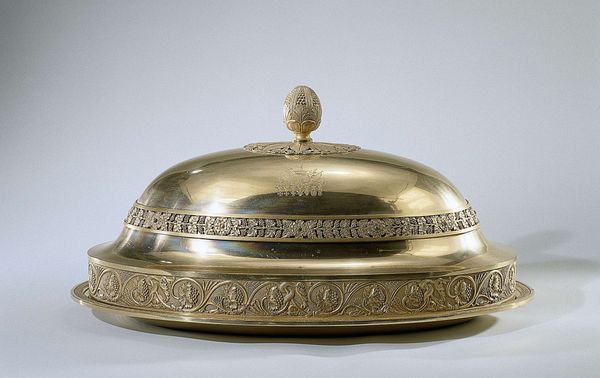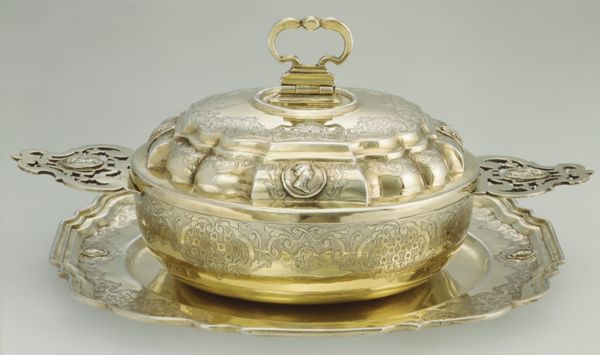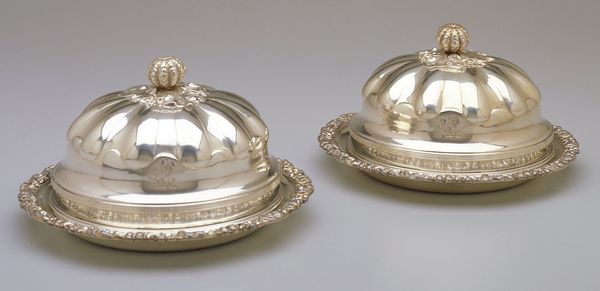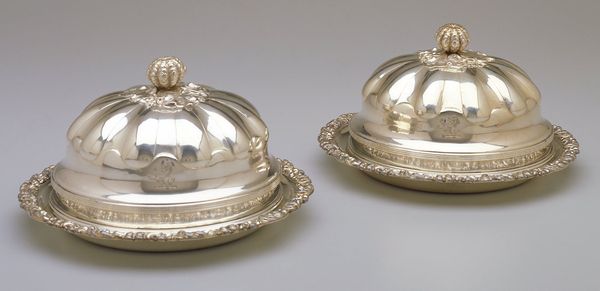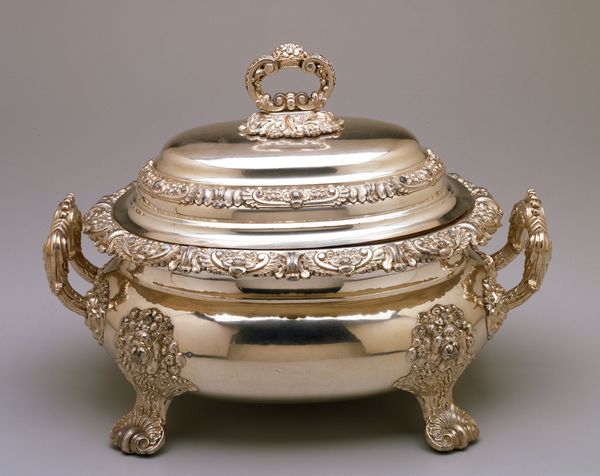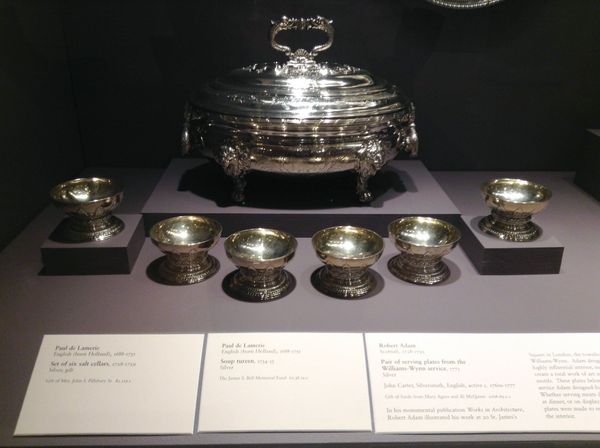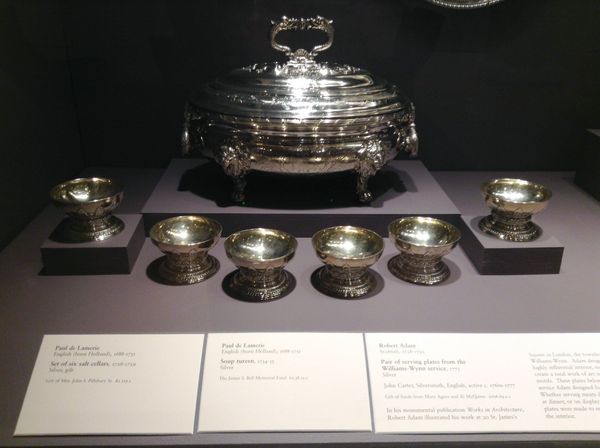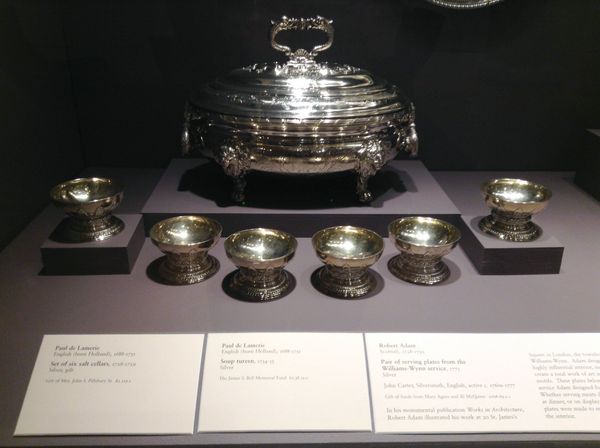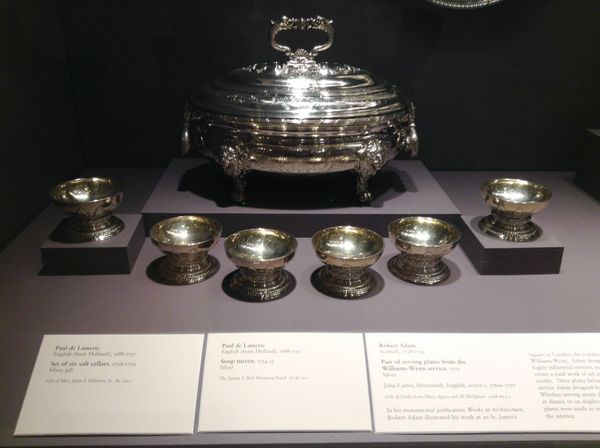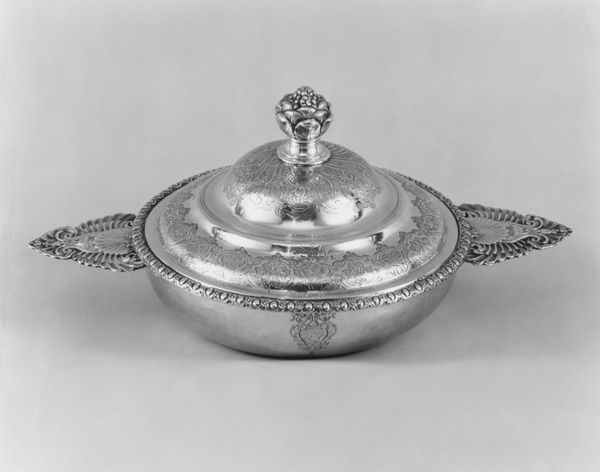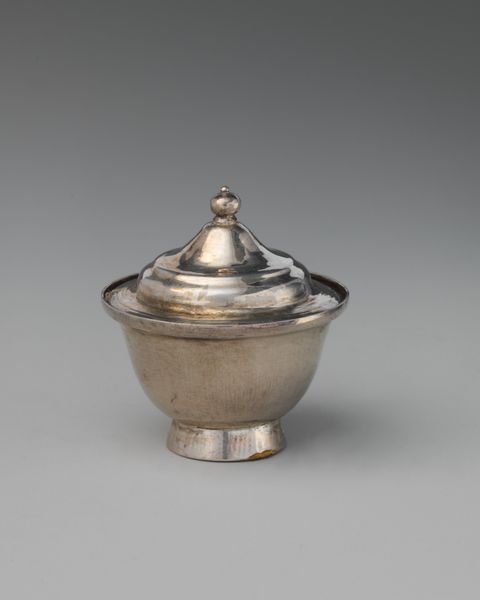
Dimensions: 8 1/4 x 10 1/8 x 10 1/8 in. (20.96 x 25.72 x 25.72 cm)
Copyright: Public Domain
This covered entrée dish was crafted in silver by Paul Storr, reflecting the opulence of the late 18th and early 19th centuries. Atop the lid, notice the serpent handle. A powerful emblem, the serpent has slithered through art history as a symbol of transformation, healing, and primal energy. From the Ouroboros—an ancient symbol of a serpent eating its own tail, representing the cyclical nature of life—to the caduceus, a symbol of medicine featuring two snakes intertwined around a staff, the serpent embodies potent forces. Consider the emotional weight of this symbol: the serpent, capable of both venom and life-saving cures, embodies humanity's deepest fears and hopes, engaging viewers on a subconscious level. Its presence atop a dish, a vessel of nourishment, is both a celebration of life’s bounty and a memento mori. The serpent is a constant reminder of the dance between life and death, renewal and decay.
Comments
minneapolisinstituteofart almost 2 years ago
⋮
These dishes were issued to Sir Gore Ouseley (1770-1844) upon his appointment in 1810 as Ambassador-Extraordinary and Minister, Plenipotentiary to the Court of Persia, when the dishes formed part of his ambassadorial service. On the side of each is engraved the arms, motto, and supporters of Ouseley and the arms of King George III. The finials feature a hound rising from a ducal coronet, a reference to the Ouseley family crest.
Join the conversation
Join millions of artists and users on Artera today and experience the ultimate creative platform.
